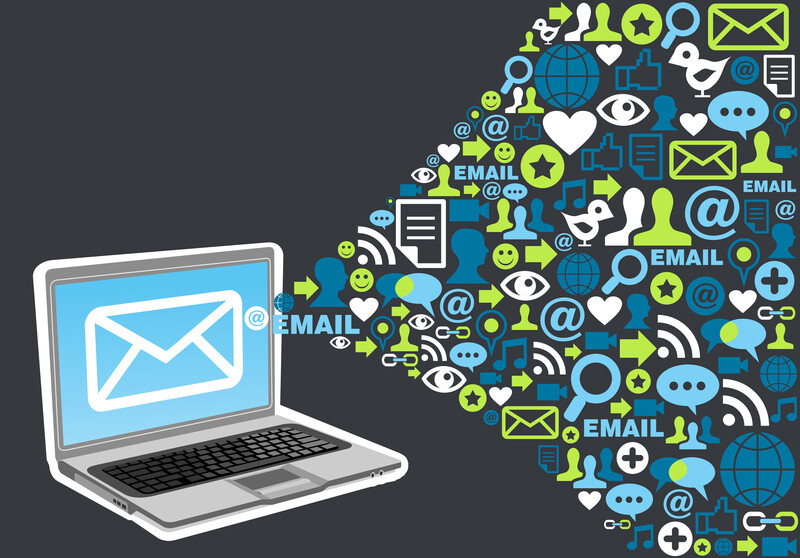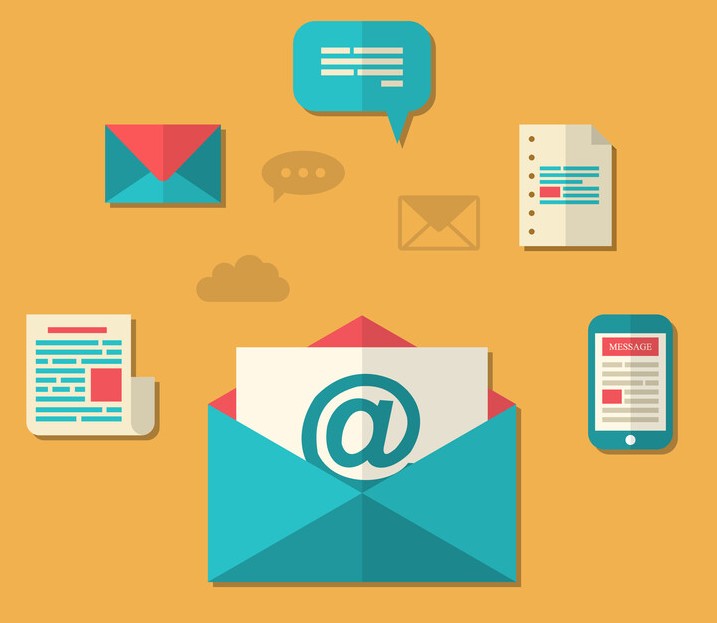Email marketing for authors is a powerful tool to promote and sell your books in today’s digital landscape. By leveraging the power of email, you can build strong relationships with your readers, drive traffic to your lead capture page, nurture your audience, and potentially sell more copies.
This comprehensive guide will walk you through the essential elements of an effective email marketing strategy for authors, helping you to make the most of this valuable promotional channel.
1. Understanding the Importance of Email Marketing
Before diving into the nuts and bolts of email marketing for authors, it’s crucial to understand why this channel is so effective in promoting and selling books.
A Personal Connection with Your Readers
Email is a unique channel that lets you establish a direct and personal connection with your readers. By sending engaging and relevant content directly to their inboxes, you can foster a sense trust that is difficult to achieve through other channels.
Increased Engagement
With the ever-changing algorithms of social media platforms, it’s becoming increasingly difficult to ensure that your content reaches your target audience organically. By contrast, email marketing allows you to connect directly with your readers, ensuring that they receive your latest updates and promotional offers.
Timely Campaigns
Email marketing enables you to send targeted messages to your readers at precisely the right moment. Whether it’s a pre-order campaign, a book launch announcement, or a time-sensitive discount offer, email allows you to deliver the right message at the right time, maximizing the impact of your promotional efforts.
2. Building Your Email List
The foundation of any successful email marketing campaign is a robust and engaged email list. Here are some proven strategies for growing your subscriber base.
Use a Lead Capture Page
A lead capture page is a dedicated landing page on your website designed to collect email addresses from your visitors. By offering valuable content or incentives (such as a free chapter, a bonus short story, or a discount on your book), you can encourage readers to sign up for your email list.
Offer Content Upgrades
Content upgrades are bonus materials that supplement your blog posts or other content offerings. By providing additional value in the form of a content upgrade (such as a downloadable checklist, infographic, or bonus chapter), you can encourage visitors to exchange their email address for access to this exclusive content.
Leverage Social Media
Promote your email list on your social media channels, and encourage your followers to sign up for your newsletter. You can create posts that highlight the benefits of subscribing to your list or offer sneak peeks of upcoming content that will be exclusive to your subscribers.
Participate in Online Communities
Join relevant forums, Facebook groups, or blog comment sections where your target audience is active. By engaging in these communities and sharing helpful information, you can build your reputation and encourage people to sign up for your email list.
Cross-Promote with Other Authors
Partner with other authors in your genre or niche to cross-promote each other’s email lists. By sharing your audiences, you can both benefit from increased exposure and grow your subscriber bases.
Utilize Surveys and Quizzes
Create engaging surveys or quizzes related to your book or genre and encourage participants to submit their email address in order to receive their results. This can be an entertaining and effective way to collect email addresses from potential readers.
3. Crafting Compelling Emails
Once you’ve built your email list, the next step is to create engaging and persuasive email content that will keep your readers hooked and encourage them to take action.
Personalize Your Emails
Use your name in the “From” section of your emails to make them feel more personal and authentic. In the body of the email, greet your reader by their first name (if possible) and strive to create a conversational tone that makes your emails feel like a personal letter between you and your reader.
Write Compelling Subject Lines
Your subject line is the first impression your email makes on your reader, so it’s essential to craft it carefully. Keep your subject lines short, clear, and engaging, and consider using tactics like personalization, curiosity, or urgency to stand out in your reader’s inbox.
Tell a Story
As an author, storytelling should come naturally to you. Use your email content to tell stories that resonate with your readers and keep them engaged from start to finish. Remember that each line of your email should have one goal: to get the reader to read the next line.
Include a Call to Action (CTA)
Every email you send should have a clear goal or desired action for your readers to take. Whether it’s to pre-order your book, read a blog post, follow you on social media, or invite friends to join your email list, be sure to include a compelling and clear CTA in your emails.
Sign Off Personally
End your emails with a personal and unique sign-off that reflects your personality and strengthens the connection between you and your reader. You can insert your signature, use a casual closing like “Take it easy,” or come up with something that feels uniquely you.
Utilize a P.S. to Reinforce Your CTA
Adding a P.S. after your closing can be an effective email marketing tactic, as many people will skim the body of the email but read the P.S. in full. Use this opportunity to reinforce your call to action or add an extra sense of urgency.
4. Email Marketing Best Practices and Common Mistakes to Avoid
To maximize the effectiveness of your email marketing efforts, it’s essential to follow best practices and avoid common mistakes.
Set Expectations
Inform new subscribers about the frequency and content they can expect from your emails. Ideally, you should communicate this information before they sign up, as well as in their welcome email, to prevent any confusion or disappointment.
Send a Welcome Email
Don’t simply add new subscribers to your regular email schedule without a proper introduction. Welcome emails have an average open rate of 92%, so take advantage of this opportunity to engage with your new readers and set the stage for your ongoing communication.
Find the Right Email Frequency
Sending too many or too few emails can both lead to unsubscribes. While there is no one-size-fits-all answer, aim to send at least one email per month and no more than one per day. Consider surveying your readers to find their preferred email frequency.
Make Your Emails Mobile-Friendly
Most people read emails on their smartphones, so ensure that your emails are designed to be easily read and navigated on a small screen. Keep paragraphs short and, if you’re using HTML, ensure your design is optimized for mobile viewing.
Stay True to Your Writing Voice
Your readers have subscribed to your list because they enjoy your writing style. Stay true to your unique voice in your emails, and avoid trying to sound like everyone else. Use the tips from this guide, but remember to write like yourself.
5. Analyzing and Optimizing Your Email Marketing Campaigns
Monitoring and analyzing the performance of your email marketing campaigns is crucial for ongoing improvement and success. Some key metrics to track include:
Open Rates
The percentage of recipients who opened your emails. A high open rate indicates that your subject lines and sender reputation are resonating with your audience.
Click-Through Rates (CTR)
The percentage of recipients who clicked on a link within your email. A high CTR indicates that your content is engaging and persuasive, driving readers to take the desired action.
Unsubscribe Rates
The percentage of recipients who opted out of your email list. A high unsubscribe rate may signal that your content is not meeting expectations or that you are sending too many (or too few) emails.
Conversion Rates
The percentage of recipients who completed a desired action, such as purchasing your book or signing up for a webinar. A high conversion rate signifies that your emails are effectively driving your desired outcomes.
By tracking these metrics and adjusting your email marketing strategies accordingly, you can continually refine your approach and maximize your results.
6. Promoting Your Book with Email Marketing
With your email marketing strategy in place, it’s time to put it to work in promoting your book. Here are some specific tactics to help drive clicks to your lead capture page and boost book sales.
Pre-Order Campaigns
Build anticipation for your book by running a pre-order campaign. Use email to inform your readers about the upcoming release, offer exclusive bonuses for pre-ordering, and provide convenient links to pre-order your book.
Follow-Up with an Email Nurture Campaign
Once your readers have expressed interest in your book by visiting your lead capture page or pre-ordering, follow up with a series of targeted emails designed to nurture their interest and drive sales. Share behind-the-scenes insights, offer exclusive content, or provide special discounts to keep your book top of mind.
Upsell to Your List
Once someone has purchased your book, use email marketing to promote additional products or services related to your book, such as signed copies, limited edition merchandise, or related books in a series.
7. Integrating Email Marketing with Other Promotional Channels
While email marketing is a powerful tool for authors, it’s essential to integrate it with your other promotional efforts for maximum impact.
Social Media
Cross-promote your email list and your social media channels to ensure your audience is aware of all the ways they can connect with you. Share snippets from your emails on social media, and encourage your followers to sign up for your email list to receive exclusive content and updates.
Blogging
Leverage your blog as a platform to showcase your expertise and attract new email subscribers. Include opt-in forms on your blog and offer content upgrades to encourage readers to sign up for your email list.
Publicity and Events
Promote your book and email list at events, such as book signings, author panels, or conferences. Collect email addresses from attendees and invite them to join your email list for exclusive insights, offers, and updates.
8. Email Marketing Platforms for Authors
To streamline your email marketing efforts, consider using an email marketing platform that caters to the needs of authors. Popular options include ActiveCampaign, HubSpot, and MailChimp. These platforms offer automation, analytics, and design tools to help you create and manage effective email campaigns.
9. Ensuring Email Deliverability
To ensure that your emails reach your readers’ inboxes follow these best practices:
Use a Professional Email Address
Sending emails from a generic or free email address can harm your sender reputation and deliverability. Instead, use a professional email address associated with your author website or domain.
Maintain a Clean Email List
Regularly review and clean your email list to remove invalid addresses, hard bounces, and inactive subscribers. This will improve your sender reputation and ensure higher deliverability rates.
10. Continuously Refining Your Email Marketing Strategy
The key to success in email marketing for authors is to continuously refine and optimize your strategy based on your performance metrics, audience feedback, and changing market conditions. Stay agile and be willing to adapt your approach to ensure that your email marketing efforts remain effective and engaging for your readers.
By leveraging the power of email marketing, you can build strong connections with your readers, drive traffic to your lead capture page, nurture your audience, and ultimately boost your book sales. With the tips and strategies outlined in this comprehensive guide, you’ll be well-equipped to harness the full potential of email marketing for authors and achieve lasting success in the world of self-publishing.





